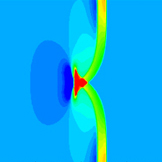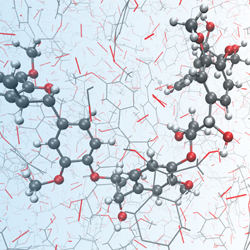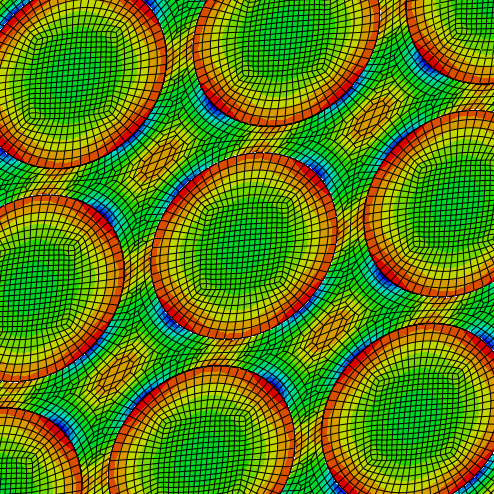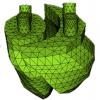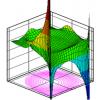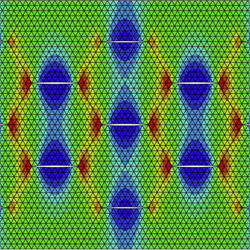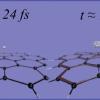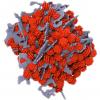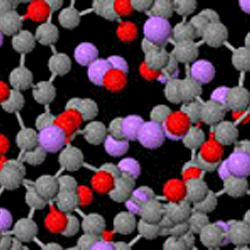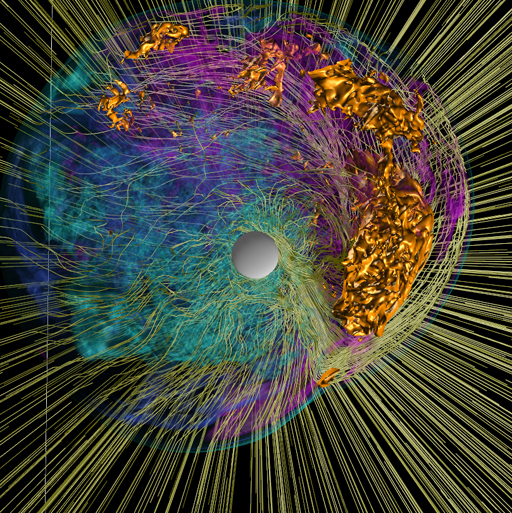Research Areas
Computational and Applied Mathematics
Yulong Xing works on the design, analysis, and implementation of accurate and efficient numerical methods for differential equations arising from physical problems. His research is currently focused on the development of high-order numerical methods for various applications, from astrophysics to hydraulic engineering to atmospheric and climate science, and others.
Computational Chemistry
Ariana Beste is interested in understanding mechanistic details of chemical conversion that are governed by kinetic barriers. Applying quantum methods, reactive force fields, transition state theory, and kinetic Monte Carlo, she is exploring various areas of research important to the mission of Oak Ridge National Laboratory: lignin conversion, low-cost carbon fiber production, and catalysis on reactive surfaces.
Computational Engineering
Stephanie TerMaath’s group focuses on computational structural mechanics. They develop numerical methods and perform computational simulation to investigate complex multi-physic problems in the fields of civil, mechanical, aerospace, and biomedical engineering. They use high-performance computing to efficiently solve complex scenarios.
Kwai Wong's research focus is the animate side of CFD, specifically the analysis of the fluid–thermal systems of the human body, ranging from the bronchial-tree system to organs and audio functionality. He and colleagues have devised a number of simulations to probe what happens when aberrations affect the remarkably intricate biological flow system—events such as stenosis [narrowing of blood vessels], stroke, and heart problems.
A. J. Baker leads research on weak form computational mathematics/physics topics in computational fluid dynamics (CFD) through UT CFD Laboratory in collaboration with JICS. Current hot research topic is HPC implementation of an analytical model-free closure theory for space filtered (LES) Navier-Stokes absent a Reynolds number (turbulent) hypothesis. A companion activity is validation of time averaged turbulent (RANS) Navier-Stokes PDE continuum modification theory enabling annihilation of nonlinear, discretization-induced dispersion error.
Computational Materials Science
Yanfei Gao's group uses computer simulation, theoretical modeling, and experiments to explore plastic deformation and fracture of a variety of advanced structural materials. These materials include superalloys, bulk amorphous alloys, and single nanoscale crystals with low-defect density. The group employs nano-indentation techniques to study the mechanical properties of materials at length scales not easily accessible by other test methods. By combining computer simulations with experiments, they obtain a far more complete picture of the material deformation and underlying mechanisms than is possible through the use of experiments alone.
Jacek Jakowski's current research focuses on the development of efficient quantum dynamics methods for the application in energy research and modeling nanoscale advanced
materials.
David Keffer’s group focuses on using multiscale modeling tools to develop structure–property relationships for complex materials, including lignin fiber carbon electrodes for batteries, proton exchange membranes for fuel cells, nanoporous materials for gas storage and separation, and targeted catalysts. Efforts are also directed at interpreting the neutron spectra of those materials. This group participates in interdisciplinary research, closely collaborating with the experimentalists who synthesize and characterize the materials that are being modeled.
Computational Physics
Predrag Krstic studies the dynamics of complex molecular systems interacting with photons, electrons, atoms, and molecules, using a wide spectrum of numerical methods, from classical and quantum-classical molecular dynamics and solutions of the time-dependent Schrodinger equation, to Poisson-Nernst-Planck-Stokes partial differential equations of fluid mechanics. The research covers applications in nanobiotechnology, nuclear fusion, particle–surface interactions, astrophysics, and molecular electronics.
Anthony Mezzacappa’s group has been engaged in the development of (1) physics-based preconditioners for the solution of the large, sparse linear systems of equations underpinning the numerical solution of the neutrino Boltzmann kinetic equations; (2) strategies for successful tera- to peta-scale data management; (3) visualization of multi-dimensional scalar, vector, and tensor supernova data; and (4) strategies for adaptive mesh refinement for memory-intensive applications involving radiation transport.
Computer Science and Software
Gregory Peterson's research addresses next-generation computing architectures—particularly accelerator technologies such as GPUs, MICs, and FPGAs. He is interested in the architecture, programming, design automation, and performance evaluation of computing systems based on accelerators and multicore processors. Gregory examines those emerging platforms by using computational science applications and exploring the most effective architectural approaches for creating highly efficient implementations. He also investigates practical operational issues related to energy efficiency and security for advanced computing systems.
